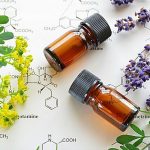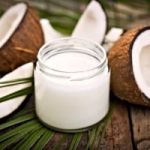The Real Story Behind Emu Oil’s Ingredients
What’s in emu oil’s ingredients that make it so good for your skin?
Well for starters, this natural oil contains special nutrients that could actually heal and support your skin’s health better than any skin lotion.
Historically, the Australian aborigines have known about the healing power of emu oil’s ingredients many decades ago.

Australian aborigines discovered emu oil health benefits
Historians believe they used the oil to protect their skin from the hot wind and sun in the Australian Outback.
However, what the aboriginals might not have known was that emu oil ingredients are comprised of an interesting blend of Essential Fatty Acids (EFA’s).
It turns out that our bodies need these essential fatty acids for many important cellular functions, including the regeneration of healthy new skin cells.
And current research has found some amazing similarities between emu oil and our own skin cells.
| Fatty Acid | Emu Oil | Human Skin |
|---|---|---|
| Myristic | 0.4 | 2.1 |
| Palmitic | 22.0 | 20.2 |
| Stearic | 9.6 | 11.2 |
| Palmitoleic | 3.5 | 3.8 |
| Oleic | 47.4 | 30.8 |
| Linoleic | 15.2 | 15.1 |
| Linolenic | 0.9 | 0.3 |
If you take a closer look at the above chart, you’ll see that emu oil and human skin are almost identical in fatty acid levels.
I was actually quite surprised when I saw this. So I believe that this similarity between emu oil and our skin may be what makes it so compatible and easily absorbed with minimal chance for allergic reactions.
In fact, I think that the high amount of fatty acids found in emu oil’s ingredients may be what makes it superior to many man-made chemicals and ingredients found in common skin care products.
So we’ll take a closer look at the Top 3 Fatty Acids found in emu oil and their possible health benefits for our skin:
- Oleic Acid (31%) – Oleic acid is an excellent fatty acid for dry aging skin. Your sebum also contains oleic acid, so this would support why emu oil is so compatible with our skin. Oleic acid is easily absorbed and can help moisturize and soften dry skin. Other skin-friendly products naturally high in oleic acid include olive oil (can contain up to 80%), shea butters (up to 40%) and even avocado oil.
- Palmitic Acid (22%) – Palmitic acid is one of the most common fatty acids found in our bodies and studies show that aging skin can lose up to 56% of palmitic acid.
- Linoleic Acid (15%) – This is an omega 6 fatty acid commonly found in vegetable oils, such as sunflower and safflower oils. This fatty acid is required for healthy cell membranes and it helps fight inflammation and promotes wound healing. Your body also naturally produces linoleic acid, but deficiencies can lead to hair loss, dry thin skin and poor wound healing.
Emu Oil’s Ingredients are Non-Allergenic and Non-Comedogenic
Due to emu oil’s ingredients having such a close profile to human skin, it’s believed to be generally well tolerated by many people.
With all the man-made chemicals, preservatives and other ingredients found in many skin care products, you may be looking for more natural ingredients that pose less risk to your body.
A common ingredient found in many skin lotions is listed as ‘petrolatum’. Petrolatum contains phospholipids, a fatty acid with a phosphorous molecule attached to them.

How Phospholipids Repel Water
Current research shows that our skin can’t absorb phosphorous very well….
What happens when you actually apply a petroleum-based skin lotion to your body it that it helps seal in moisture, but it doesn’t really moisturize your skin very well.
These lotions work by forming a barrier to seal water on the skin surface. And since they form a water-proof seal, you have to wonder just how well your skin can breathe after applying these types of products on your body.
Emu oil’s ingredients are less likely to clog skin pores and it’s been shown to be non-allergenic and non-comedogenic for the most people.
However, if it’s your first time using emu oil for skin care, it’s recommended you do a small skin patch test to test for any possible reactions.
Ingredients in Emu Oil May Be Better for Skin Health
Studies have shown that natural oils which contain higher amounts of oleic acid possess skin-penetrative effects.
Scientists believe that emu oil can be used to help other skin-friendly ingredients absorb and penetrate into the deeper layers of the skin.
An article published in The Dermatologist highlighted studies showing emu oil was more cosmetically acceptable and had better skin penetration and permeability than the mineral oil,

Emu oil is a Natural Skin Moisturizer
You can use emu oil on dry skin, psoriasis, eczema, help soften stretch marks and wrinkle prevention.
Many athletic therapists find this oil makes an excellent balm for aching joints and muscles.
Emu oil’s anti-inflammatory properties may make it an excellent treatment for sunburns, as well as minor cuts and wounds.
It’s naturally creamy texture goes on very light and you’ll be amazed how fast it’s absorbed into your skin.
Due to these properties, you’ll find many other uses of emu oil.
What about Emu Oil Side Effects?
Studies have proven emu oil’s ingredients have no side effects when applied to the skin.
- It’s non-comedogenic (doesn’t clog pores)
- Easily absorbed for maximum moisturization
- Hypo-allergenic
Emu oil’s ingredients are very similar to your skin’s fatty acid make up. This makes the oil a healthy choice for natural skin care.
Current research has shown there are no documented dangers of emu oil when used according to recommended directions.
If you’re looking for a healthy oil that may naturally moisturize your skin, take a look at this healing oil and see how great your skin might look and feel.
Home Page > Emu Oil Home Page > Emu Oil Ingredients





